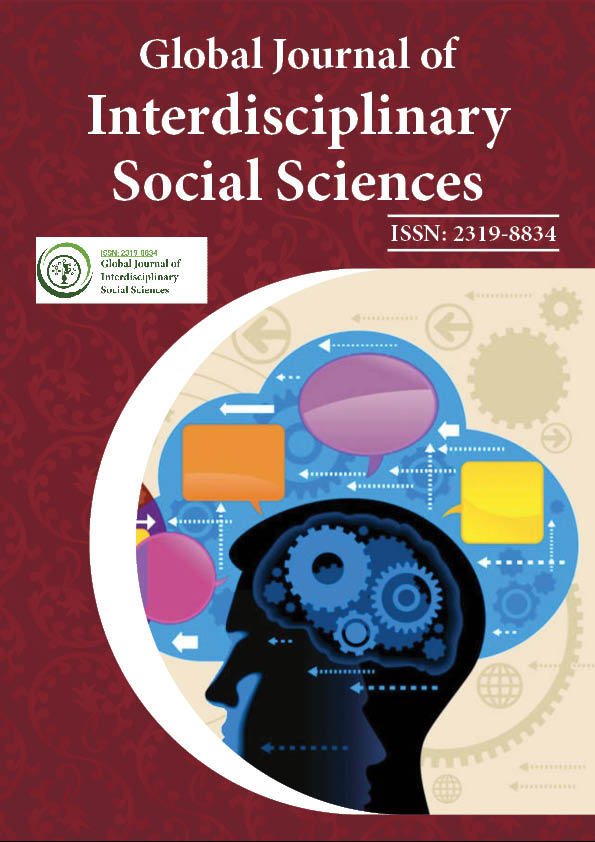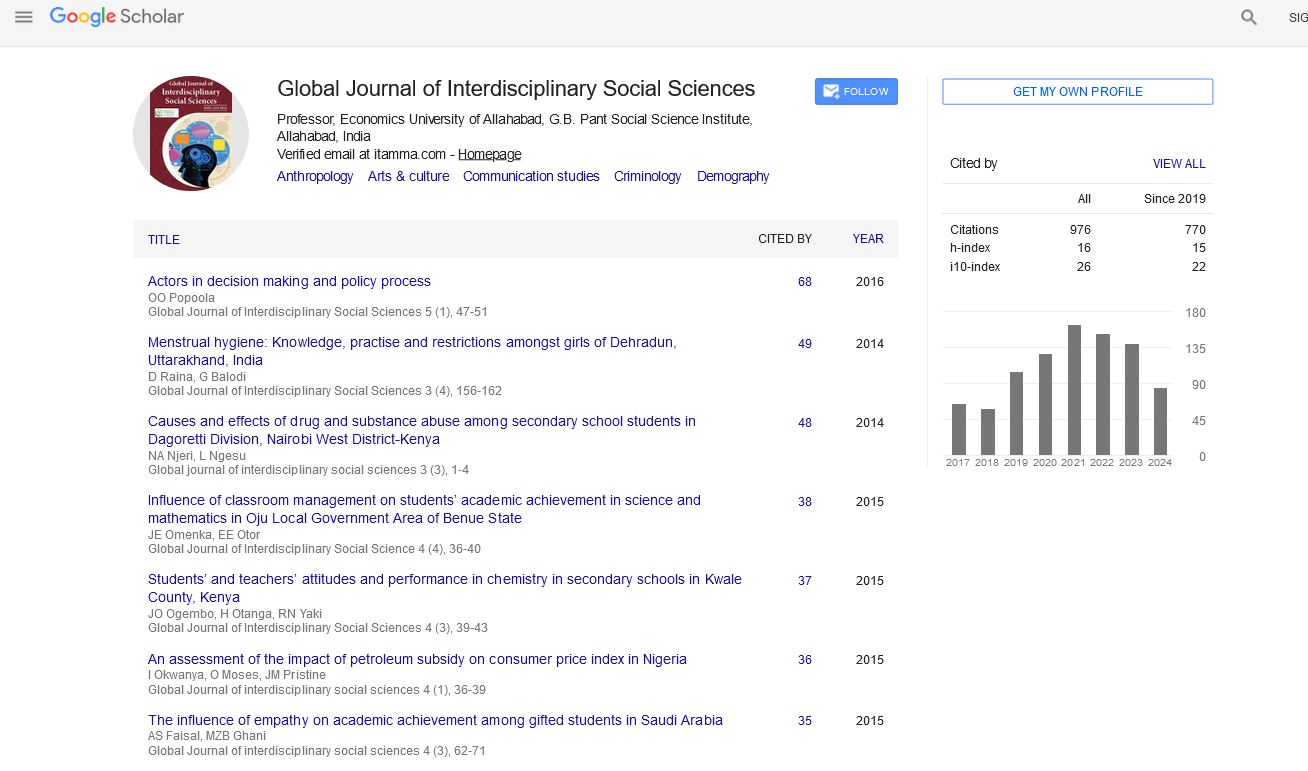Indexed In
- JournalTOCs
- Google Scholar
Useful Links
Share This Page
Journal Flyer

Open Access Journals
- Agri and Aquaculture
- Biochemistry
- Bioinformatics & Systems Biology
- Business & Management
- Chemistry
- Clinical Sciences
- Engineering
- Food & Nutrition
- General Science
- Genetics & Molecular Biology
- Immunology & Microbiology
- Medical Sciences
- Neuroscience & Psychology
- Nursing & Health Care
- Pharmaceutical Sciences
Commentary - (2023) Volume 12, Issue 2
Public Administration in the Modern Era: Challenges and Prospects
Agnieszka Ubowska*Received: 15-May-2023, Manuscript No. GJISS-23-22449; Editor assigned: 17-May-2023, Pre QC No. GJISS-23-22449; Reviewed: 31-May-2023, QC No. GJISS-23-22449; Revised: 07-Jun-2023, Manuscript No. GJISS-23-22449; Published: 14-Jun-2023, DOI: 10.35248/2319-8834.23.12.056
Description
Public administration is an essential role in implementing government policies and brings public services to citizens, serving as the vital link that turns political decisions into public services. It influences various aspects of society and our day-today lives. It plays a major role in ensuring that the government functions effectively and that public services meet the needs of the citizens. In this commentary, we look into the implications of public administration and its role in the modern world.
Impact of public administration
Public administration is not an unchangeable. It does not remain the same over time but is flexible and can adapt, it is continuously changing and progressing that adapts to the significant change of politics, society, and economy. It has increased from a basic role of facilitating government operations and it is not just about running the government anymore. Public Administration now plays a vital role in improving society overall. This could involve initiatives aimed at social welfare, economic development, health and education improvements, environmental protection, and more.
The new public management
Public Administration brought about by the adoption of New Public Management principles. New Public Management (NPM) is a management philosophy used by governments and public service institutions beginning in the 1980s, designed to modernize and improve efficiency within the public sector. NPM supports for the application of private sector management models in the public sector. NPM introduced market-oriented management techniques, competitiveness, and a customerfocused approach to public services. This model proved instrumental in reducing the process of providing public services and brought the public sector closer to citizens.
Network governance model
In a network governance model, public administration is seen more as an organizer, coordinating and collaborating with different stakeholders, rather than a service provider. This model is believed to offer more flexibility and adaptability, allowing for more innovative and integrated solutions to complex public problems. This new approach to public administration emphasizes collaboration, partnerships, and active citizen engagement. The shift towards network governance is a response to the complex and interconnected nature of public issues that the modern world faces. It recognizes the importance of cooperation across public, private, and nonprofit sectors in addressing societal challenges effectively.
Challenges and future directions
Despite these transformations, public administration today faces strong challenges. The global rise of technological advancements, coupled with socio-economic disparities, demand novel approaches to governance. The ongoing COVID-19 pandemic has underscored these challenges, revealing significant gaps in public health systems worldwide and emphasizing the critical need for responsive and resilient public services. Even though the situations are problematic or tough, they provide a chance to find innovative solutions, learn new things, develop skills, or make beneficial changes. The rise of digital technology offers the potential to transform public services. The move towards using digital technologies in governance demonstrates the potential for positive change and improvement in public administration.
Conclusion
In conclusion, public administration plays a vital role in making government work and providing services to people. Over time, it's changed a lot to better fit the needs of society, becoming more open to new ideas and working closely with different groups of people. Issues like social differences, new technology, and worldwide health crises have tested public administration. But even these tough situations have offered chances to learn and make positive changes. The use of digital technology, for example, is helping to make public services better. As we look to the future, it's clear that public administration will keep changing to meet society's needs. And as it changes, it will keep playing a big role in making our communities better. To make the most of the chances that new technology offers and to keep improving, we need to understand how public administration has changed, what it looks like now, and where it's heading. Whether we work in public administration or use the services it provides, it's important for all of us to understand its role in our lives.
Citation: Ubowska A (2023) Public Administration in the Modern Era: Challenges and Prospects. 12:056.
Copyright: © 2023 Ubowska A. This is an open-access article distributed under the terms of the Creative Commons Attribution License, which permits unrestricted use, distribution, and reproduction in any medium, provided the original author and source are credited.

